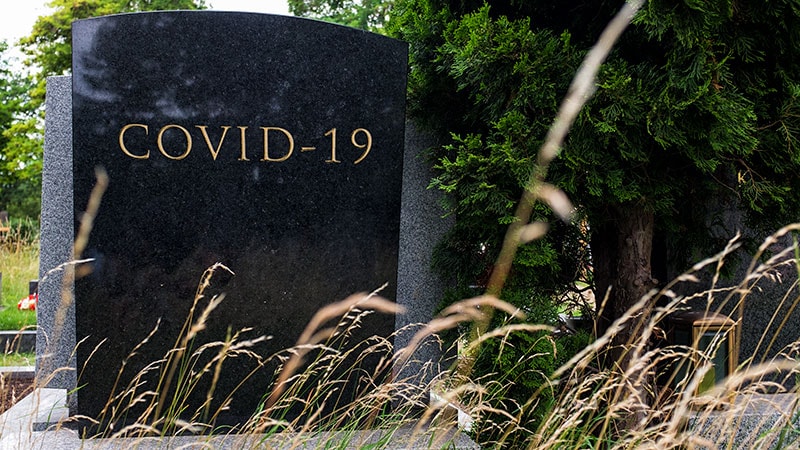- Joined
- Jun 8, 2008
- Messages
- 56,765
"
Today the World Health Organization declared the end of the Public Health Emergency of International Concern (PHEIC). This is a huge moment in our story arc of the fight against COVID-19. Here is what it does and does not mean.
This doesn’t mean that COVID-19 is gone. SARS-CoV-2 is currently mutating 2 times faster than the flu. We will get future waves, but hopefully these will be “wavelets” given the population-level immunity from vaccines and infections. And wavelets will happen several times a year. The probability of a variant of concern (which would be named Pi) is still ~20% in the next 1.5 years. If one emerges, it would likely cause a tsunami. (We saw something similar happen after the 1918 flu emergency ended.) And we cannot ignore the fact that COVID-19 is a leading cause of death in many countries. This will likely remain for years.
This doesn’t mean that we can go back to pre-pandemic times. This does not mean that some countries (cough, cough U.S.) don’t have serious underlying problems that need to be addressed. It’s beyond time to confront the threats to our individual and collective health so we are not in a constant state of emergency. We cannot keep living in a perpetual cycle of panic and neglect.
Use this time to take a deep breath, cry, reflect, hit a pillow, meditate and/or celebrate surviving (figurately and literally) the past 3.5 years. We deserve all the feelings today, especially for those of us on the front lines who sacrificed so much. Today is a monumental symbol of this life-changing event. But then we need to hold our heads high and continue fighting COVID-19 and improving our systems so we don’t repeat our failures.
The end of an emergency is the beginning of preparedness.
"
A monumental moment: End of international emergency
|
Today the World Health Organization declared the end of the Public Health Emergency of International Concern (PHEIC). This is a huge moment in our story arc of the fight against COVID-19. Here is what it does and does not mean.
What this means
The WHO Emergency Committee believes three things:- COVID-19 is not unusual and unexpected.
- Cross-border transmission can’t (and won’t) be stopped.
- COVID-19 does not require a coordinated international response.
- The end of mobilizing international coordination;
- The end of streamlining international funding;
- The end of accelerating the advancement of the development of vaccines, therapeutics and diagnostics under emergency use authorization.
What it does not mean
This doesn’t mean the end of a pandemic. Declaring a PHEIC is not the same thing as declaring the end of a pandemic. “Pandemic” is rhetoric that governments use as a communication tool—it indicates the widespread occurrence of an infectious disease across the globe at a particular time. In theory, the end of a PHEIC comes far before the end of a pandemic.This doesn’t mean that COVID-19 is gone. SARS-CoV-2 is currently mutating 2 times faster than the flu. We will get future waves, but hopefully these will be “wavelets” given the population-level immunity from vaccines and infections. And wavelets will happen several times a year. The probability of a variant of concern (which would be named Pi) is still ~20% in the next 1.5 years. If one emerges, it would likely cause a tsunami. (We saw something similar happen after the 1918 flu emergency ended.) And we cannot ignore the fact that COVID-19 is a leading cause of death in many countries. This will likely remain for years.
This doesn’t mean that we can go back to pre-pandemic times. This does not mean that some countries (cough, cough U.S.) don’t have serious underlying problems that need to be addressed. It’s beyond time to confront the threats to our individual and collective health so we are not in a constant state of emergency. We cannot keep living in a perpetual cycle of panic and neglect.
Bottom line
I welcome this decision to end the emergency for the same reasons I thought it was time to end the American national emergency. We now find ourselves in an awkward phase with this virus—somewhere between a full-blown emergency and an endemic state of predictability. (Epidemiologists don’t have a word for this phase.)Use this time to take a deep breath, cry, reflect, hit a pillow, meditate and/or celebrate surviving (figurately and literally) the past 3.5 years. We deserve all the feelings today, especially for those of us on the front lines who sacrificed so much. Today is a monumental symbol of this life-changing event. But then we need to hold our heads high and continue fighting COVID-19 and improving our systems so we don’t repeat our failures.
The end of an emergency is the beginning of preparedness.
"




















300x240.png)